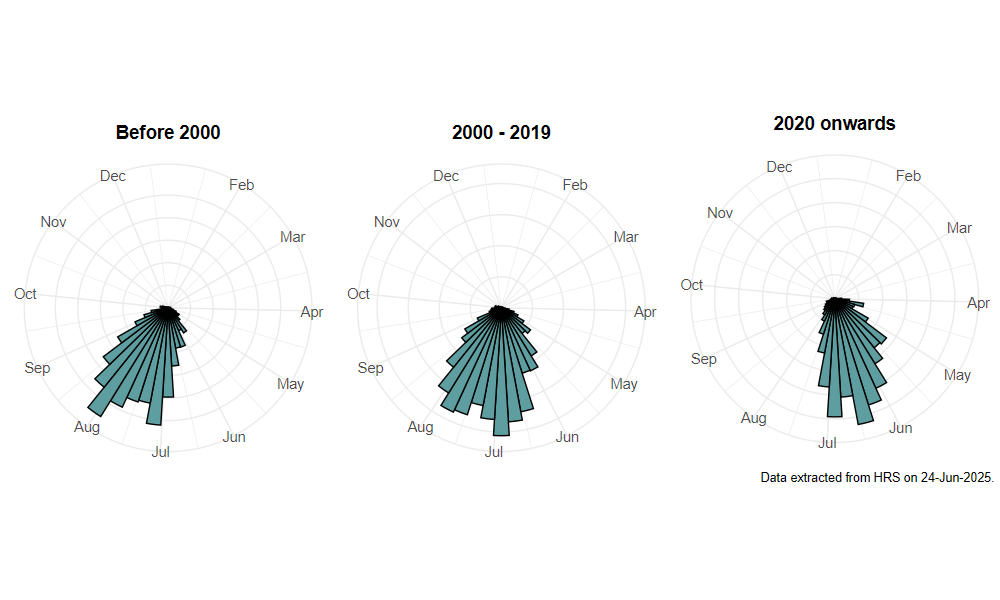Eupeodes corollae (Fabricius, 1794)
Identification
Identification difficulty = 2. ![]()
![]() according to Ball & Morris, 20241
according to Ball & Morris, 20241
Synonymy
Syrphus corollae Fabricius (consisto Harris) in Coe(1953)2, Metasyrphus corollae (Fabricius) in Stubbs & Falk (1983)3.
Biology
The larva feeds on aphids on various low growing plants, especially Leguminosae. Adults highly mobile and may be found at flowers in open situations ranging from woodland clearings to arable farmland and urban areas. They visit a wide range of flowers and commonly occur in parks and gardens. This species overwinters as a puparium and has a very long flight period.
Flight period
The following plots show the number of unique records per week excluding those reported to be of immature stages.

Distribution
One of the commonest flower-visiting species throughout Britain, and believed to be boosted in abundance, at least in some years, by migration from the continent. This is primarily a southern species but it occurs throughout the British Isles. More northerly records tend to be from coastal and lowland situations.

Trends
The following plots show the Frescalo TFactor vs year and a map of the rescaled frequency (all records) for the species.
-
Ball, S., & Morris, R. (2024). Hoverflies of Britain and Ireland. WILDGuides (3rd ed.). Oxford: Princeton University Press. ↩
-
Coe, R. (1953). Diptera: Syrphidae. Handbooks for the Identification of British Insects, 10(1), 1–98. ↩
-
Stubbs, A., & Falk, S. (1983). British Hoverflies: An Illustrated Identification Guide (1st ed.). Reading: BENHS. ↩